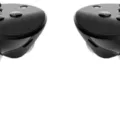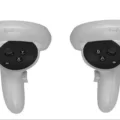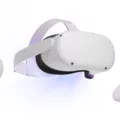When it comes to virtual reality (VR) experiences, having the right interpupillary distance (IPD) is crucial for optimal image quality and comfort. IPD refers to the distance between the center of your eyes, specifically the distance between each pupil. This measurement plays a significant role in ensuring that the lenses inside your VR headset are positioned correctly for clear vision and accurate depth perception.
To fully understand the importance of IPD in VR, let’s delve into some details. The average IPD for adults is around 63 mm, with the majority falling between 58 and 73 mm. However, it’s worth noting that IPD can vary significantly from person to person. A study conducted by the US Army in 2012 found a range of 51 to 74.5 mm for women and 53 to 77 mm for men. These variations highlight the need for adjustable IPD settings in VR headsets to accommodate different individuals.
Having the correct IPD setting on your VR headset is crucial for several reasons. Firstly, it ensures that each pupil is aligned with the center of the lens, which is essential for clarity and sharpness of the virtual images you see. If the lenses are misaligned with your pupils, you may experience blurred vision or eyestrain, which can greatly diminish the immersive VR experience.
Secondly, an accurate IPD setting enhances depth perception in VR. By aligning your pupils with the center of the lenses, you enable the VR system to create a more realistic sense of depth. This depth perception is what allows you to accurately judge distances and sizes of virtual objects, making the VR experience more believable and immersive.
Fortunately, many VR headsets on the market today come with adjustable IPD settings. These settings allow you to customize the distance between the lenses to match your specific IPD measurement. By doing so, you can ensure that the lenses align perfectly with your pupils, providing optimal image quality and reducing the risk of discomfort or eye strain.
To determine your IPD, you can visit an optometrist who will measure it precisely. Alternatively, there are smartphone apps and online tools available that can help you measure your IPD at home. Once you have your IPD measurement, you can adjust the IPD settings on your VR headset accordingly, ensuring a personalized and comfortable VR experience.
Understanding and adjusting your IPD in VR is essential for achieving the best possible image quality and comfort. By aligning the lenses with your pupils, you can enhance clarity, depth perception, and overall immersion in the virtual world. Whether you’re a casual VR user or a serious enthusiast, taking the time to set your IPD correctly will undoubtedly enhance your VR experience.

What is IPD in VR?
IPD in VR stands for Inter Pupillary Distance. It refers to the distance between a person’s pupils, which is an important measurement when it comes to virtual reality (VR) headsets.
The IPD measurement is crucial in VR because it helps to ensure that the images displayed on the headset align properly with the user’s eyes. Since everyone’s eyes are unique, having the correct IPD setting is essential for a comfortable and immersive VR experience.
When using a VR headset, the lenses inside the device are positioned in a way that the clearest spots on the lenses align with the user’s pupils. This lens spacing, or IPD adjustment, allows the user to see the virtual world in the most accurate and clear manner possible.
To set the IPD in a VR headset, users can often find a physical adjustment mechanism or a software setting. Some headsets have a slider or dial that can be adjusted to match their specific IPD measurement, while others may require manual adjustment or even an app on a connected device.
Having the correct IPD setting in VR is crucial for several reasons:
1. Comfort: When the IPD is set correctly, it helps to reduce eye strain and discomfort during extended VR sessions. A misaligned IPD can cause headaches, eye fatigue, and general discomfort.
2. Visual Clarity: Proper IPD adjustment ensures that the virtual images are sharp and clear. If the IPD is set incorrectly, the user may experience blurred or distorted visuals, which can significantly impact the overall VR experience.
3. Immersion: VR aims to create a sense of immersion and presence in a virtual world. By aligning the virtual images with the user’s eyes, a correct IPD setting enhances the feeling of being fully present in the virtual environment.
IPD in VR refers to the Inter Pupillary Distance, which is the distance between a person’s pupils. Setting the IPD correctly in a VR headset is crucial for comfort, visual clarity, and an immersive VR experience.
What is IPD on Oculus Quest?
IPD, short for interpupillary distance, is a crucial measurement when it comes to the Oculus Quest virtual reality headset. It refers to the distance between the center of each pupil in your eyes. The IPD setting on the Oculus Quest allows you to adjust the position of the lenses so that they align with the center of your pupils, ensuring optimal visual clarity and depth perception during virtual reality experiences.
By adjusting the IPD setting on the Oculus Quest, you can customize the headset to suit your individual eye characteristics. This is important because everyone’s eyes are different, and having the correct IPD setting can make a significant difference in your VR experience.
To adjust the IPD on the Oculus Quest, you can use the physical IPD slider located on the bottom of the headset. By sliding it left or right, you can increase or decrease the distance between the lenses, aligning them with your eyes’ center pupils. This adjustment is typically done to achieve the clearest and most comfortable visual experience.
It is worth noting that having the correct IPD setting is important for reducing eye strain, minimizing discomfort, and maximizing the overall enjoyment of VR content. Therefore, it is recommended to take the time to properly adjust the IPD on your Oculus Quest to ensure the best possible visual experience.
IPD on the Oculus Quest refers to the interpupillary distance, or the distance between the center of each pupil. Adjusting the IPD setting on the headset allows you to align the lenses with your eyes’ center pupils, enhancing visual clarity and depth perception during virtual reality experiences.
What is the Range of IPD?
The range of IPD, or Interpupillary Distance, varies among individuals. A study conducted in the US Army in 2012 found that the IPD range for women was between 51 and 74.5 mm, while for men it was between 53 and 77 mm. This means that the distance between the pupils can differ significantly from person to person. It is important to note that these ranges are specific to the sample studied and may not represent the entire population. However, they provide an understanding of the potential variation in IPD measurements.
How Important is IPD for VR?
IPD (interpupillary distance) is a crucial factor in ensuring a high-quality and comfortable virtual reality (VR) experience. The IPD measurement determines the distance between the center of your eyes, and it varies from person to person. Here are some key reasons why IPD is important for VR:
1. Optimal Image Quality: VR headsets display separate images for each eye, creating a 3D effect. If the IPD setting is incorrect, the images may appear blurry or misaligned, leading to a poor visual experience. Adjusting the IPD to match your own ensures that the images align perfectly with your eyes, resulting in a clear and immersive VR experience.
2. Comfortable Viewing Experience: Incorrect IPD settings can cause eye strain, fatigue, and discomfort during extended use of VR headsets. By setting the IPD correctly, you can align the lenses with your eyes, allowing them to focus naturally and reducing eye strain. This helps in preventing headaches and discomfort, making your VR experience more enjoyable.
3. Depth Perception and Immersion: IPD affects how we perceive depth and distance. When the IPD setting is accurate, the VR headset can create a realistic sense of depth, enhancing the feeling of immersion in virtual environments. This accurate perception of depth is crucial for gaming, training simulations, and other VR applications where spatial awareness is important.
4. Individual Differences: People have varying IPD measurements, typically ranging from 55mm to 75mm. Using a VR headset with a fixed IPD setting may not cater to everyone’s needs, leading to a suboptimal experience for individuals with IPD outside the average range. Adjustable IPD settings allow users to customize the headset to match their specific IPD, accommodating a wider range of users.
IPD is highly important for VR as it directly impacts image quality, comfort, depth perception, and immersion. To ensure an optimal VR experience, it is crucial to use a headset that allows for IPD adjustment and accurately set it to match your individual IPD measurement.
Conclusion
IPD (Inter Pupillary Distance) is a crucial factor to consider when using VR (Virtual Reality) headsets. It refers to the distance between the center of your eyes and affects your vision clarity and depth perception in the virtual world. By aligning the lenses of the headset with the center of each pupil, you can enhance your visual experience and ensure optimal image quality.
The mean IPD for adults is approximately 63 mm, with a majority falling between 58 and 73 mm. However, there is a wide range of IPD measurements, as seen in studies that have reported values ranging from 51 to 74.5 mm for women and 53 to 77 mm for men.
To provide a comfortable and immersive VR experience, many companies offer adjustable IPD settings on their headsets. This allows users to customize the lens spacing to match their specific IPD, ensuring that the virtual images are properly aligned with their eyes.
By taking into account your IPD and adjusting the headset accordingly, you can enhance the visual clarity, reduce eye strain, and improve the overall comfort of your VR experience. It is important to measure your IPD accurately or consult with a professional optician to ensure the best fit for your specific needs.
Understanding and adjusting IPD in VR headsets is essential for achieving optimal image quality and comfort. By aligning the lenses with your eyes’ center, you can enhance your immersion in the virtual world and enjoy a more realistic and visually engaging experience.












